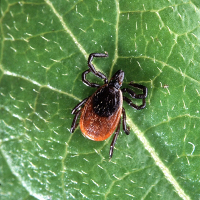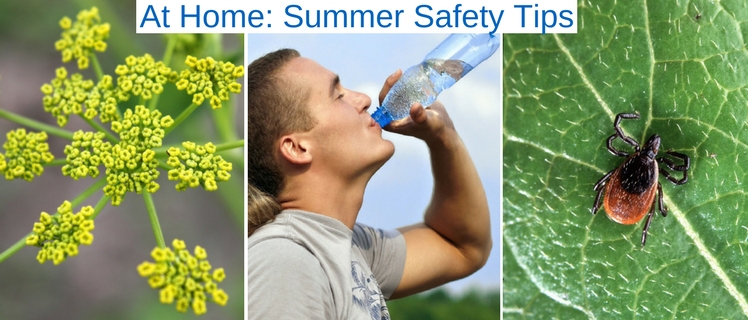Summer safety tips

Health and safety is our number one priority. We want to share these summer safety tips from expert sources so that you and your family can be informed on every-day hazards.
Poisonous Plants
Poisonous Plants – sourced from the Ontario Government and the University of Guelph.
Giant hogweed
- Poisonous: Yes, do not touch this plant.
- Height: one to 5.5 metres.
- Leaves: Large, deeply cut with sharp coarse teeth, reaching widths in excess of one metre.
- Stems: Covered in coarse, whisker-like hairs with red/purple spots.
- Flowers: White, umbrella shaped, up to 1.2 metres across.
CAUTION: If you come in contact with this plant, you could experience severe burns to your skin. Contact with eyes can cause temporary or permanent blindness.
Wild parsnip
- Poisonous: Yes, do not touch this plant.
- Height: one to two metres.
- Leaves: Pinnately compound with two-to-five pairs of opposite, sharply-toothed leaflets.
- Stems: Completely smooth and reddish/green in colour.
- Flowers: Yellow, umbrella shaped, 10-20 cm across. Similar in appearance to dill.
CAUTION: If you come in contact with this plant, you could experience severe burns to your skin. Contact with eyes can cause temporary or permanent blindness.
When working near these plants:
- Wear goggles, rubber gloves, rubber boots and full coverage overalls.
- Make sure to bring a bucket, soap, water and a scrub brush, and thoroughly wash rubber boots and gloves before taking off all of your protective clothing.
If you come into contact with these plants:
- Seek immediate shelter (exposure to sap makes human skin hypersensitive to sunlight).
- Thoroughly wash exposed skin with soap and water.
- If skin reacts, seek medical attention.
Learn more at www.weedinfo.ca.
Heat Stress
Heat Stress – sourced from the Occupational Health and Safety Council of Ontario.
Heat stress can be deadly. Symptoms include weakness, fatigue and dizziness. Protect yourself:
- Drink water
- Wear light, loose clothing
- Schedule more breaks
- Use sunscreen
- Keep your head covered outdoors
- Schedule work for a cooler part of the day
For additional information on heat stress, visit the Ontario Ministry of Labour's web page.
Ticks and Lyme Disease
Ticks and Lyme disease - sourced from Kingston Frontenac Public Health
Ticks that may cause Lyme disease can be found throughout our area. It is important to protect yourself and your pets. Using an insect repellent with DEET or Icaridin can also provide some protection. Follow directions for use.
Look for Ticks!
- When you return from being outdoors, check yourself for ticks (include armpits, groin, scalp, ankles, navel, and behind your ears and knees. Have someone else check the back of your body).
- A quick shower may help remove any ticks not yet attached.
- Outdoor clothes can be put into a hot dryer to kill loose ticks.
- If you are going hiking or walking in natural areas, wear long-sleeved shirts, long pants, socks and shoes.
- Tuck your pants into your socks.
- Wear light coloured clothing. Ticks are more visible on light colours and harder to attach on clothing.
Lyme Disease
Ticks that may cause Lyme disease can be found throughout our area. It is important to protect yourself and your pets. Lyme disease is caused by the bite of a black legged tick infected with bacteria called Borrelia burgdorferi. Infected ticks are most harmful after being attached for 24 hours or longer.
Symptoms of this disease may include bull’s eye rash, fever, headache, fatigue, muscle and joint pain, spasms, facial paralysis, and swollen glands. Some symptoms may disappear after a short period of time. If left untreated, symptoms may increase in severity and affect both joints and brain function overtime.
If you develop symptoms of Lyme disease, consult your health care provider.
For more information visit Kingston Frontenac Lennox and Addington Public Health Unit
